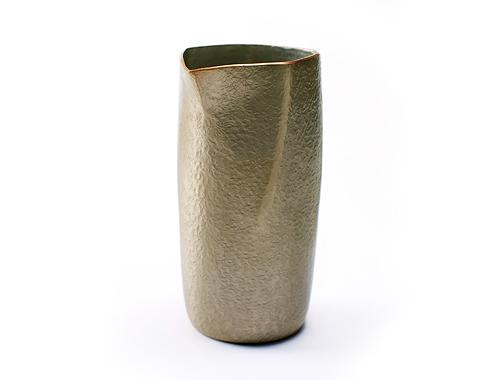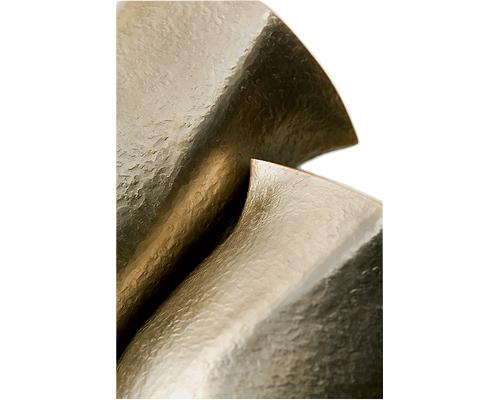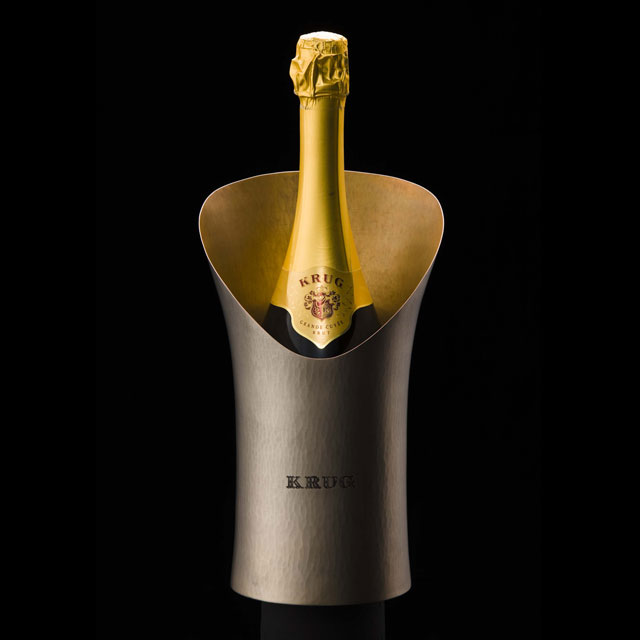monocose.com will release “Copper Sake Sarvers”, which were hand made by Gyokusendo. Gyokusendo is one of the oldest copperware manufacturers in Japan (founded in 1816), and is recognized as the “Intangible National Cultural Properties of Japan”, and the “Living Intangible National Cultural Tresures of Japan” by the government.
Hand made copper sake cup “Hineri Uchikomi (twist and hit)” series looks like twisted vessels and are created by using a technique developed by the masters of Gyokusendo. The cups have a tin surface, which is protective against stains and gives an elegant champagne color.
Information from the manufacturer:
The color of Gyokusendo’s TSUIKI (Hand-Hammered metal craft) copper-wares will gradually become mellow with increasing depth and gloss by rubbing them with a dry cloth after using them in everyday life. Gyokusendo’s craftmen are able to create a piece of raw copper as if it were a living object.
Tsubame is one of the world’s leading cities of metal manufacturing industry. The roots of its metal manufacturing industry was originally manufactured “Wa Kugi” (Japanese metal spikes/nails/sprigs) in the beginning of the Edo era (approximately in the beginning of 1600). In the late Edo era (approximately end of 1700), Toshichi, a contractual metal craftsman came from Sendai city to Tsubame city and he introduced the “TSUIKI” (Hand-hammered metal crafts method) and TAMAGAGAWA Kakubei, the founder of Gyokusendo, was one of the craftsmen who took over and mastered the method. Behind the history, tradition and development of “TSUIKI” method in Tsubame city, there was an advantage that the fine quality copper were mined in Mt. Yahiko which is close to Tsubame city, thus materials for copper-ware were easily obtained.
Gyokusendo initially started to manufacture copper-ware for daily use (pans, iron pots and kettles) and gradually added elements of art and design to its Tsuiki copper-ware. In 1873, Gyokusendo participated the Vienna World Exposition which was the first world exposition Japan participated. Since then, Gyokusendo has been participated and awarded approximately thirty international and domestic expositions before the World War II. In 1894, Gyokusendo dedicated a “Tsuiki” bud vase to celebrate the twenty-fifth marriage anniversary for His Imperial Majesty Mutsuhito, Emperor of Japan (a.k.a. Emperor Meiji or Mutsuhito the Great).
Gyokusendo have been dedicating its “Tsuiki” products to the Imperial family of Japan for their auspicious occasion and events. Gyokusendo has been awarded prizes of “Prefectural Intangible Cultural Treasure” by Niigata Prefecture, “National Intangible Cultural Treasure of Japan” by the Cultural Agency of Japan, and “National Traditional Crafts of Japan” by the Ministry of Economy/Trade/Industry of Japan. Gyokusendo has been, is and will be continuing to develop and support “Tsuiki” which is now the only and the last existing industrial tradition of the hammering metal craft method in the world.
Gyokusendo cups are available at www.monocose.com on and after the 6th of June.
Gyokusendo recently collaborated with French Champagne producer “Krug”.








